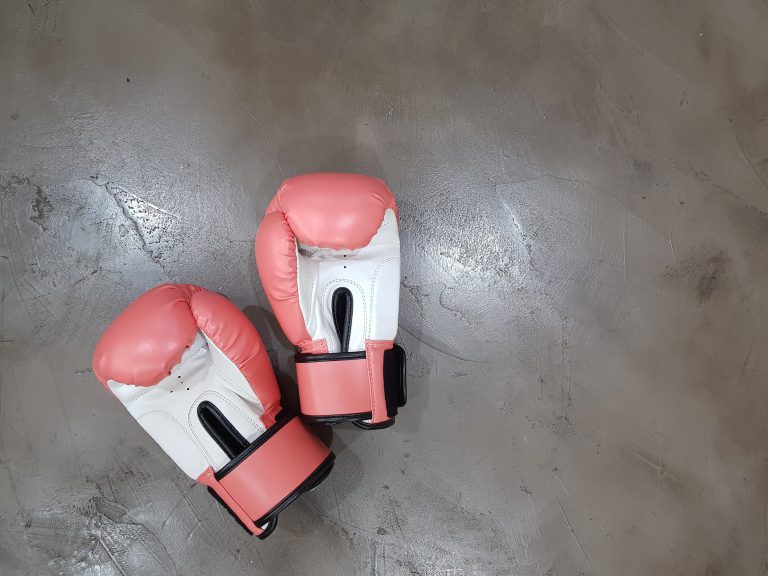Does Karate Teach Self Defense?
Karate is one of the most popular martial arts practiced throughout the world. It’s a discipline that requires a combination of physical and mental training. The benefits of karate are many – it helps with self-control, self-discipline, and self-esteem. However, one of the most common reasons why people choose to learn karate is for self-defense. The question, then, is whether karate actually teaches self-defense. In this blog post, we’ll explore the answer.
What Is Karate?
Karate originated in the Ryukyu Kingdom, now known as Okinawa, Japan. It is a combat sport that involves striking and kicking techniques, grappling, joint locks, throws, and defensive techniques. Karate focuses on self-defense, discipline, and physical conditioning. There are several styles of karate, including Shotokan, Wado-ryu, Goju-ryu, Shito-ryu, and Kyokushin.
Karate Techniques for Self-Defense
The techniques used in karate are designed for self-defense purposes. Karate employs strikes, punches, kicks, and throws, which can be used to disable or subdue an attacker. The focus of karate is not to engage in a fight, but rather to avoid one. There are a few techniques in karate that are particularly useful for self-defense:
1. Blocks
Karate practitioners learn a variety of blocking techniques, which are used to deflect and redirect incoming attacks. When executed correctly, blocks can make the attacker lose their balance, giving the karateka an opportunity to counter-attack or escape.
2. Strikes
Karate strikes are quick and powerful. They can be used to deliver a blow to an attacker’s vulnerable areas, such as the nose, throat, or groin. Strikes can also be used to create distance between the karateka and the attacker, allowing the karateka to escape.
3. Kicks
Karate kicks are versatile and powerful. They can be used from a distance to keep an attacker at bay, or up close to deliver a disabling blow. Kicks can be delivered to various parts of the body, including the head, torso, or legs.
4. Joint Locks
Joint locks are techniques that are used to immobilize an attacker by manipulating their joints. In karate, joint locks are used primarily to control an attacker and prevent them from causing harm. They are particularly effective against larger and stronger attackers.
The Importance of Practice
While karate techniques can be effective for self-defense, their effectiveness depends on the practitioner’s level of skill and experience. Learning karate is a long-term commitment that requires regular practice and training. With regular practice, you’ll be better prepared to use the techniques in a self-defense situation.
Limitations of Karate in Self-Defense
While karate can be useful for self-defense, it’s important to acknowledge its limitations. For one, karate is primarily a striking art, which means it’s not as effective against attackers who are grabbing or choking. Additionally, karate doesn’t include much training in ground fighting or grappling, which can be important in certain self-defense situations.
Does Karate Teach Self Defense?
Karate is a martial art that involves using hands and feet to perform various forms, katas, and sparring techniques. It is a discipline that emphasizes training for self-defense, but whether or not it actually teaches self-defense remains a controversial topic.
Here are some of the most frequently asked questions about the topic:
What is self-defense?
Self-defense refers to the practice of defending oneself from harm, whether it is physical or emotional harm. Self-defense can occur in various situations, such as an attempted robbery, a physical altercation, or an incident of bullying.
Is karate effective for self-defense?
Karate can be effective for self-defense if the practitioner has been trained correctly. However, it is important to note that not all karate schools teach self-defense techniques, and not all karate practitioners train for self-defense.
Some schools focus more on the traditional aspects of karate, such as katas and forms, which may not be as effective in real-life self-defense situations. On the other hand, some schools specifically train students for self-defense situations, which may include practicing techniques such as strikes, kicks, and blocks.
Ultimately, it depends on the individual school and teacher to determine whether or not karate is effective for self-defense.
What are some self-defense techniques taught in karate?
Some self-defense techniques taught in karate include:
– Strikes: Punches and elbow strikes to the attacker’s vulnerable areas such as the face, throat, and solar plexus.
– Kicks: Front, side, and roundhouse kicks to the attacker’s groin, knee, or shin.
– Blocks: Techniques to block and neutralize the attacker’s strikes and punches.
– Throws: Techniques to throw the attacker off balance, such as hip throws or shoulder throws.
Can karate help prevent self-defense situations?
Yes, karate can help prevent self-defense situations. Practicing karate can improve one’s confidence and situational awareness, which may help prevent the individual from becoming a victim of an attack.
Karate also teaches discipline, respect, and self-control, which can help individuals avoid confrontations and resolve conflicts peacefully.
What are some tips for using karate techniques in a self-defense situation?
– Stay calm: It’s important to stay calm and composed in a self-defense situation, as panic can lead to mistakes and further endangerment.
– Evaluate the situation: Assess the situation and determine the most appropriate response. If possible, try to de-escalate the situation verbally before resorting to physical techniques.
– Use technique accurately: Aim for the attacker’s vulnerable areas such as the face, throat, or solar plexus with powerful and accurate strikes.
– Use appropriate force: Use enough force to defend oneself, but not to cause unnecessary harm or escalate the situation further.
Does Karate Teach Self Defense? A Guide to Understanding Proper Self Defense Techniques
Introduction
Karate is one of the most popular martial arts forms practiced globally. People often associate karate with self-defense due to its widespread use in tournaments, movies, and media. However, it is essential to understand that there is a big difference between the karate practiced as a sport and karate taught for self-defense. This guide aims to help you understand the true nature of karate and whether it can teach you self-defense.
What is Karate?
Karate is a martial art that originated in Japan and is based on a system of punches, blocks, and kicks. It involves using your entire body as a weapon to deliver powerful strikes to your opponent. Modern karate focuses heavily on physical fitness, sparring, and technique rather than its roots as an art of self-defense. Karate has various techniques for self-defense, but most schools emphasize the sport aspect of the martial art.
Can Karate Be Used for Self Defense?
Yes, it can, but it depends on the style of karate and the training received. Karate can be a useful tool for self-defense if the training focuses on practical applications of techniques, rather than simply practicing kata (a series of pre-determined movements) or scoring points in sparring matches. Not all schools of karate teach self-defense, so it is essential to research the style and approach before enrolling in a class.
What Are the Basic Self-Defense Techniques in Karate?
Some of the basic techniques used for self-defense in karate include:
1. Blocks: Karate has various types of blocks that can be used to stop incoming attacks, such as punches or kicks. Blocks are essential in self-defense as they can prevent the attacker from inflicting damage on you.
2. Strikes: Karate has various types of strikes, such as punches, kicks, elbows, and knee strikes, that can be used offensively to create openings or defensively to defend against attacks.
3. Joint locks: Joint locks in karate are techniques that apply pressure to specific joints, causing pain that can restrict an attacker’s movement or force them to submit.
4. Throws: Throws are techniques that involve using an attacker’s momentum against them and throwing them to the ground.
How to Choose the Right Karate School for Self-Defense?
Choosing the right karate school for self-defense is essential. Here are some essential factors to consider:
1. Style: Not all karate styles are equal when it comes to self-defense. Some styles, such as Shotokan, focus more on sport and kata, while others, like Goju-ryu, emphasize practical applications of techniques.
2. Instructor: The instructor plays a vital role in the quality of the training received. The instructor should have experience teaching self-defense and be able to provide practical applications of techniques.
3. Curriculum: The curriculum should include self-defense techniques and scenario training, not just kata and tournament sparring.
4. Realistic Training: Realistic training should simulate real-life situations to prepare students mentally and physically for self-defense scenarios.
Conclusion
Karate can indeed teach self-defense if the training focuses on practical applications of techniques and includes scenario training. Selecting the right karate school is vital, and students must research the style, instructor, curriculum, and training methods before enrolling. However, karate should not be your only tool for self-defense; it is essential to gain knowledge and training in other self-defense techniques as well. Remember, the best way to avoid physical harm is to avoid dangerous situations and learn how to recognize and respond appropriately to potential threats.
Inhaltsverzeichnis






